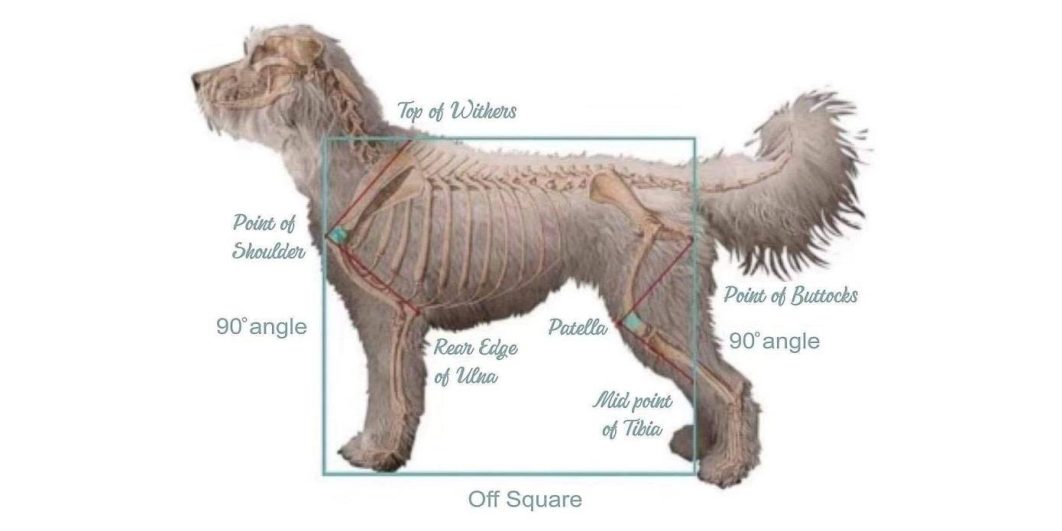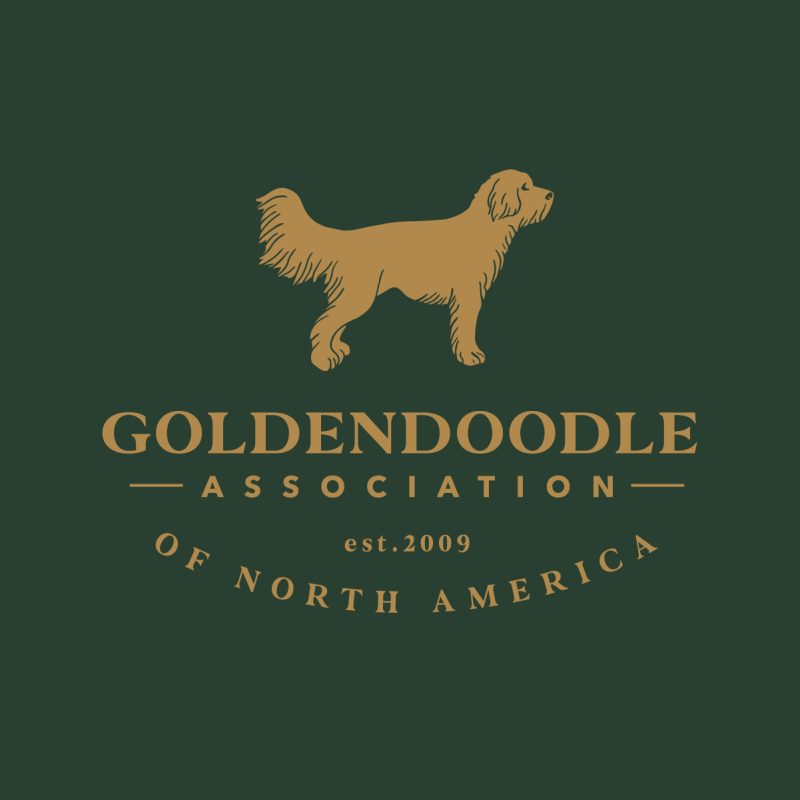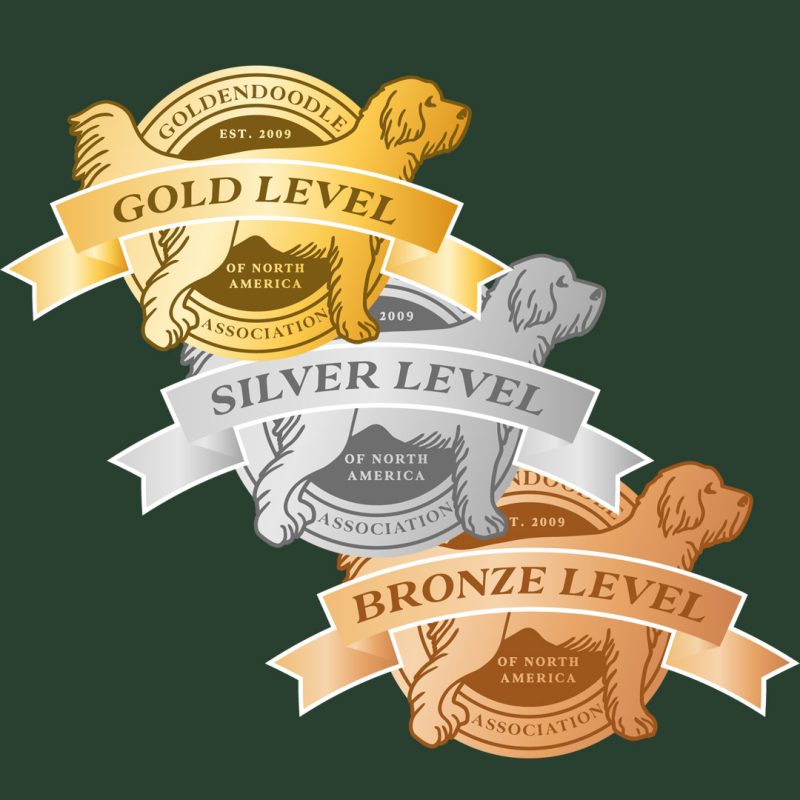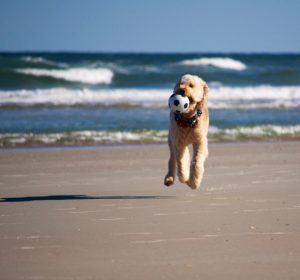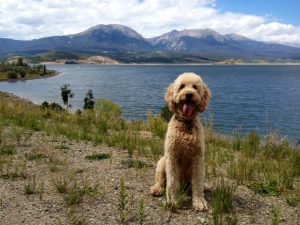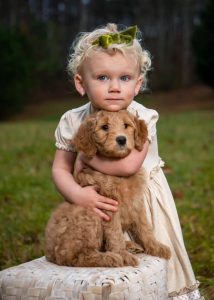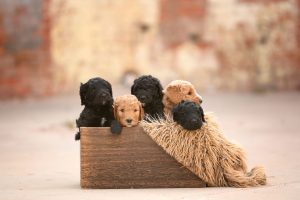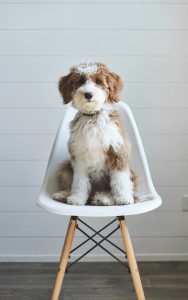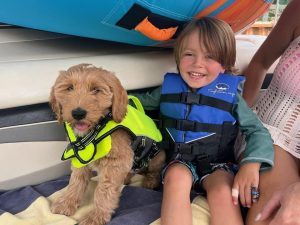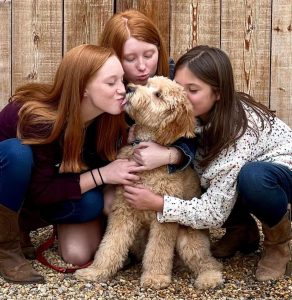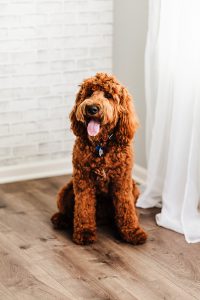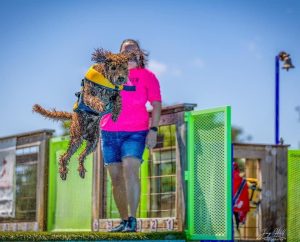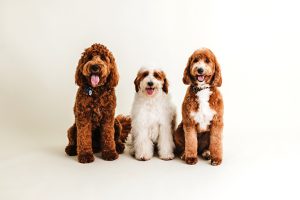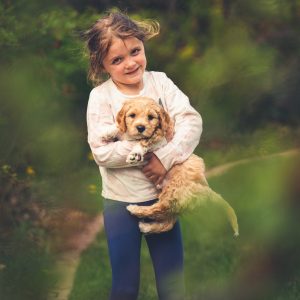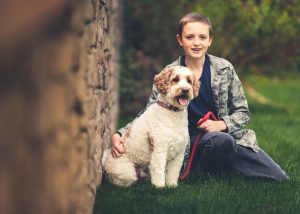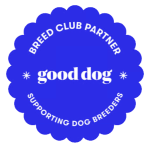Here is the official Goldendoodle Breed Standard.
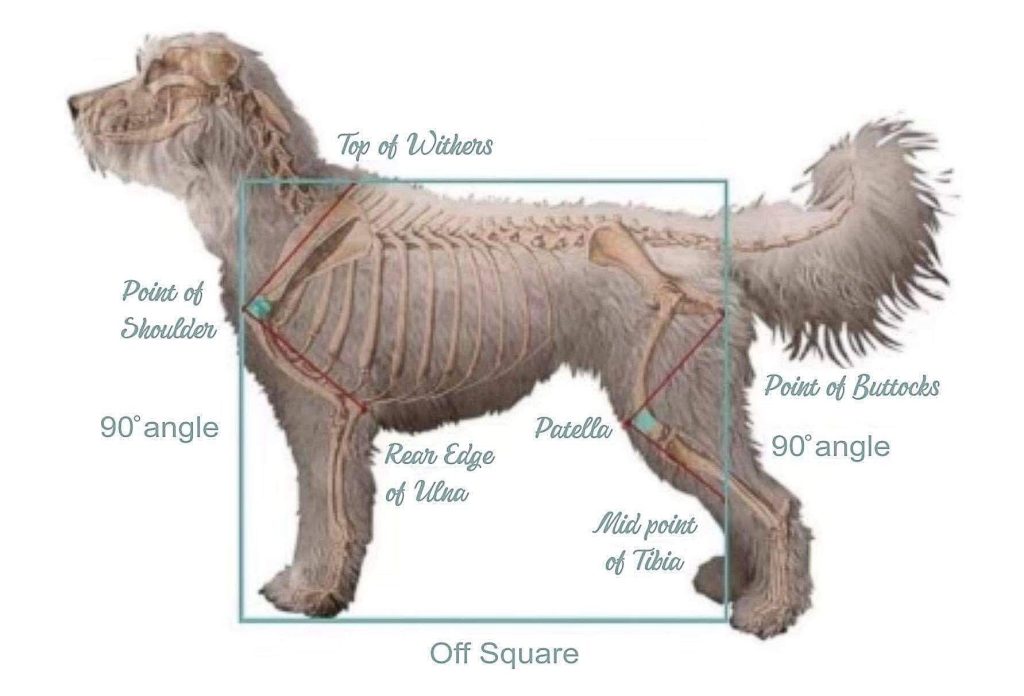
General Appearance
The Goldendoodle is a friendly, intelligent, and confident breed with a happy expression that is engaging and welcoming to strangers. His loyalty and eagerness to please make him the perfect companion dog, the function for which he is purposely bred. Since this is not a conformation show breed, his health and calm temperament are equally top priorities; however, proper structure is also essential to overall health, well-being, and breed type. His temperament must be stable and sound under all possible situations while he continues to prove his suitability for service/therapy work. The breed was developed by crossing Poodles and the Golden Retriever, and therefore the physical appearance of this breed is a balanced mix of the traits common to those two founding breeds, which are the only two breeds that comprise the Goldendoodle. To ensure as much genetic diversity as possible, the stud book will remain open and the dogs may be bred from the founding breeds or from multigenerational stock. These founding breeds, when combined through multiple generations, present a well put together, agile, durable and athletic dog, whose light footedness results in a smooth, fluid gait. Goldendoodles possess a distinct diversity in coat types, colors, and sizes, which is inherited from the parent breeds.
Size, Proportion, Substance
Size
- Petite Mini – Height: below 14 inches from the withers to the ground, typically 25 pounds or less.
- Mini – Height: over 14 inches but under 17 inches from the withers to the ground, typically 26-35 pounds
- Medium – Height: over 17 inches but under 21 inches from the withers to the ground, typically 36-50 pounds
- Standard – Height: over 21 inches from the withers to the ground, typically 51 pounds or more.
Height will be the determining factor for accurate size since weights can fluctuate.
Proportion
The build of the Goldendoodle is consistent with that of the endurance trotter: slightly longer in back from the forechest to the point of rump than the height from the ground to the withers. His length of leg is to be equal to his depth of body. The brisket is to extend down to the center of the back of the elbow.
Substance
Adequate bone and muscle are necessary for his active play style, energy level, and exercise endurance. His bone substance is moderate, neither too heavily nor too slightly boned. His weight is proportionate to his size, neither overweight nor underweight.
Head
Skull –Top skull is slightly broader at the back than at the front (above the eyes) and slightly arched. The stop is moderate. Length from the center of the stop to the occiput is slightly longer in length than that of the muzzle from the center of the stop to the tip of the nose. A slightly square muzzle is preferred over a narrow muzzle. The skull and muzzle are on parallel planes. Looking face-on, the head is clean cut with no prominence in cheeks. There is adequate fill/chiseling under the eyes.
Muzzle – In profile, the Goldendoodle’s muzzle is straight, not roman, dished, or downfaced. The width is more consistent with that of the Golden Retriever – i.e., not as narrow as that of the Poodle. It is slightly wider at the stop than at the tip of the muzzle where the nose begins. The upper lip should cover the lower jawline, but lips are never pendulous nor fluttering. The upper lip falls away in a curve toward the throat. The underjaw is never too short in length, as to create a snipey appearance.
Eyes – Oval shaped, moderately wide set, and do not protrude. Eyelids are tight with no haws.
Ears – Front edges of the ears are attached well behind and roughly even with the eye, hanging close to the cheek. Ear leather is moderately thick, and the length of ear extends down to just below the lower jawline. Low set or low hanging ears, as in that of the Hound set, are not desirable.
Bite – A scissor bite is required. A dog with a malocclusion should not be bred.
Teeth – Teeth are strong and clean, with full dentition preferred.
Nose – All colors and combinations are acceptable. Split noses should not be bred.
Neck, Topline, Body
Neck – Of moderate length, never short, fat, or offset, such as an ewe neck. The throat latch is tight with no excess skin hanging. The neck is well muscled, slightly arched, and gradually flowing into the shoulders.
Topline – Relatively level with a slight dip behind the withers and a slight rise above the loin. The back never slopes off or roaches up.
Body – Well-balanced and short coupled. The chest and ribs are elliptical shaped. The brisket is as deep as the elbow when viewed from the side. There is an adequate tuck up at the loin but never too extreme as to appear waspy.
Forequarters
Legs are straight when viewed from the front with elbows tucked in close to the ribcage. Toes are pointing forward. Pasterns are short and strong with a slightly sloping forward angle. Shoulder blades are well laid back at an angle that matches that of the rear angulation to create a sense of balance. The upper arms and shoulder blades are about the same length, setting the elbows back beneath the upper tip of the blades when standing foursquare. All four legs are near vertical to the ground.
Hindquarters
The rear is strongly muscled with a croup slightly sloped at an approximate 20 to 30 degree angle. The femur joins the pelvis at an angle that matches that of the shoulder angle, resulting in a balanced dog. Stifles are well bent, hocks are well let down, and rear pasterns are strong and perpendicular to the ground when standing foursquare. Legs are straight when viewed from the rear, never cow-hocked, sickled, or bowed.
Feet
Small to medium sized in relation to the size of the dog. The shape is oval, and the foot is compact, well-knuckled, and cushion toed; pads are thick. Nails are kept trimmed so as to prevent them from touching the ground. Dewclaws are optional. Feet are never splayed, nor are they turned in or out. Toes are never too high or too short.
Tail
Set moderately high on the croup, but not so high as to create a flat backline. The tail is to show off feathering.
Coat
There are 3 approved coat types: the curly, the wavy, and the straight. Coat is of a soft texture with facial furnishings; ideally, the Goldendoodle coat possesses hypoallergenic and low to no shed qualities.“Incorrect Coats” are those that have no furnishings, that are not hypoallergenic, and that shed; they are ideally only bred when it’s prudent to bring in other desirable traits from an IC coated dog or to keep diversity by continuing a line.
Colors
All colors are acceptable with the exception of those associated with health problems; these include, but may not be limited to, double merles, extreme whites to the extent that it would affect hearing, and double dilutes.
Learn more about the approved coat types and colors here
Gait
A lively yet fluid gait that requires minimal energy. They have strong reach and drive consistent with that of the endurance trotter.
Temperament
Goldendoodles must be friendly, reliable, trustworthy, and well-rounded. His stability in most situations and environments, particularly with children, elderly, and the disabled, is consistent with that which is required to perform as a trained service and therapy dog. Unwarranted hostility, timidity, nervousness and/or hyperactivity should never be seen in a Goldendoodle. Dogs that exhibit any of these temperament faults should not be bred, as temperament is paramount for this breed.

